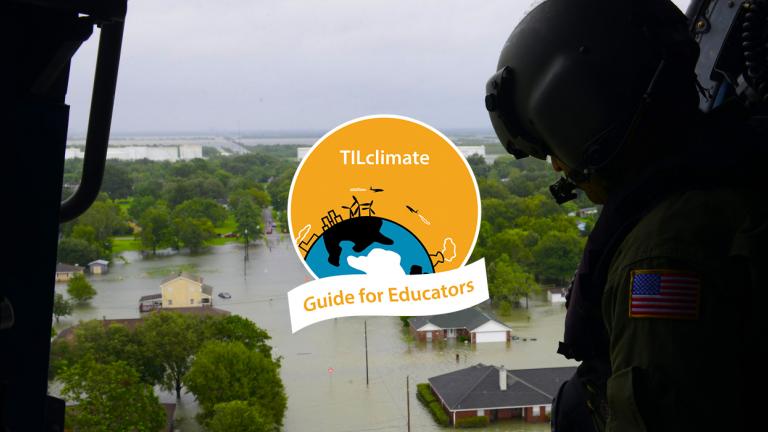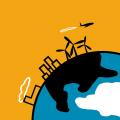
This Guide for Educators was developed by the MIT Environmental Solutions Initiative as an extension of our TILclimate (Today I Learned: Climate) podcast, to make it easier for you to teach climate change, earth science, and energy topics in the classroom. It is an extension of the TILclimate episode "TIL about national security."
Browse all TILclimate guides for educators.
Description
Changes to the climate have had and will have dramatic effects on natural disasters, mass movement, and government stability. The ability of governments, organizations, and leaders to plan for, adapt to, and prevent natural disasters will shape the future.
In this set of activities, high school students model changes in climate and their effects on international relations, investigate local climate impacts and solutions, and observe global climate patterns and adaptations. Lessons may be standalone or done in series.
SWBAT:
-
Describe the connection between natural disasters, mass migration, and international relations.
-
Describe the connection between human-caused carbon dioxide emissions and global climate change.
-
Describe some methods of adaptation to climate-related risks around the world.
Skills:
- Map analysis
- Critical thinking
- Communication
Standards:
-
HS-ESS3-1 Construct an explanation based on evidence for how the availability of natural resources, occurrence of natural hazards, and changes in climate have influenced human activity.
-
HS-ESS3-4 Evaluate or refine a technological solution that reduces impacts of human activities on natural systems.
-
HS-ETS1-3 Evaluate a solution to a complex real-world problem based on prioritized criteria.
-
CCSS.ELA-LITERACY.RH: History/Social Studies - Integration of knowledge and ideas
Disciplinary core ideas:
- ESS3.B: Natural Hazards
- ESS3.C: Human Impacts on Earth Systems
- ESS3.D: Global Climate Change
What is included in this Educator Guide
- How to use TILclimate Educator Guides (Download)
- Full Educator Guide (Download)
- Includes both Teacher and Student pages
- Includes both Teacher and Student pages
- Teacher pages (Download)
- Includes materials, discussion questions, background resources, and adaptation suggestions for science, social science, and ELA teachers
- Includes materials, discussion questions, background resources, and adaptation suggestions for science, social science, and ELA teachers
- Student pages (Download)
- Reading: National Security & Climate Change
- Game: Mass Movement
- Data Investigation: Local impacts
- Case Studies: Local solutions
- Research: Global impacts, global solutions
Listen to the episode


